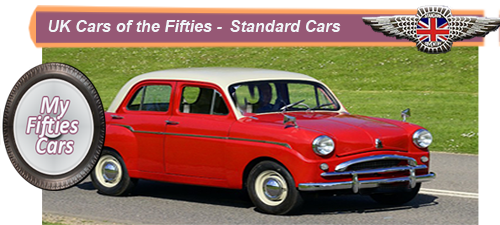
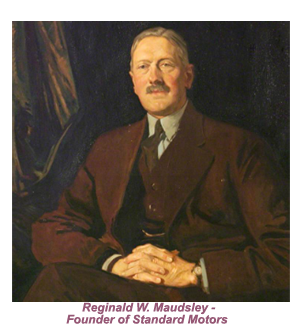 After beginning his career in the automative industru producing motorcycles, Reginald Maudslay, added a couple of wheels to his prospectus,forming Standard Motors in 1903.
After beginning his career in the automative industru producing motorcycles, Reginald Maudslay, added a couple of wheels to his prospectus,forming Standard Motors in 1903.
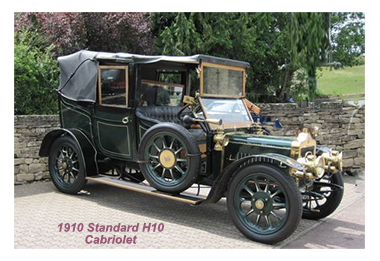 Maudsley chose the Midlands city of Coventry as his manufacturing base.
Maudsley chose the Midlands city of Coventry as his manufacturing base.
It proved to be a wise choice as Coventry at that time was becoming a hotbed for the rapidly burgeoning auto industry in the UK.
Maudsley’s design skills captured the attention of the motoring public not just in the Midlands but later throughout the UK.
Already well established by the time World War One broke out, Standard were duty-bound to time their considerable production facilities and expertise towards the war effort.
 It was a tribute to Standard’s ability to adjust to any situation that the company became one of the first to get back into full production as soon as the armistice agreement with Germany was signed.
It was a tribute to Standard’s ability to adjust to any situation that the company became one of the first to get back into full production as soon as the armistice agreement with Germany was signed.
With Reginald Maudslay taking more of a backseat in the day to day running of Standard, the driving force behind the Standard Motor Company's dramatic expansion during their post-war years and after was a talented engineer by the name of Captain John Black.
![]()
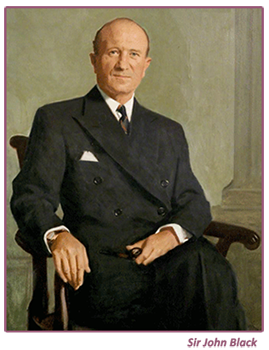 Maudsley chose his eventual successor very wisely as Black came to Standard with a wealth of experience as well as pedigree, being the son-in-law of William Hillman, founder of the massive car company that bore his name.
Maudsley chose his eventual successor very wisely as Black came to Standard with a wealth of experience as well as pedigree, being the son-in-law of William Hillman, founder of the massive car company that bore his name.
 So rapid was Standard’s expansion, Black’s management skills became stretched to the limit.
So rapid was Standard’s expansion, Black’s management skills became stretched to the limit.
The pace of Standard's expansion was becoming increasing difficult to subsidise meaning that the company, despite enjoying unprecedened sales was suffering from considerable cash-flows problems.
With the company faltering financially as the end of the Thirties approached, once again war clouds began to loom, and Standard once again abandoned all aspects of domestic production.
During the Second World War, the Standard factory, along with their colleagues in the Midlands of England, were subject to consistent attacks from the air by the German Luftwaffe with the plant suffering considerable damage.
During the war years, Black acted as chairman for the Joint Aero Engine Committee, being eventually knighted for his considerable contribution towards the war effort.
![]()
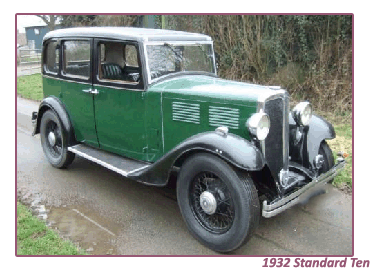 Despite this setback, with Sir John Black leading the way, Standard had cleared the debris bombing of Coventry, even before the war ended, meaning that they were able to get back into production even before the end of 1945.
Despite this setback, with Sir John Black leading the way, Standard had cleared the debris bombing of Coventry, even before the war ended, meaning that they were able to get back into production even before the end of 1945.
The first post-war release was the Standard Eight, powered by a 1,009 cc engine, capable of generating a mere 28 bhp and reaching a top speed of 62 mph.
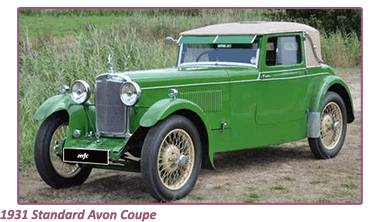 Despite being one of the smallest and slowest cars on UK roads at that time, the Eight proved to be very popular, especially among first-time buyers as it was very keenly priced.
Despite being one of the smallest and slowest cars on UK roads at that time, the Eight proved to be very popular, especially among first-time buyers as it was very keenly priced.
With Standard up and running, the company was soon able to announce the release of their Twelve and Fourteen models, considerably faster, driven by a 1,609 and 1,766 cc engine respectively.
As well as producing new models to fill the post-war demand, Sir John Black also had his eye on expansion, which came with the acquisition of the Triumph Motor Company for the then considerable sum of £75,000.
![]()
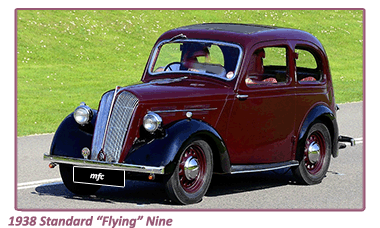 Triumph had failed to make it through the Depression years of the Thirties, going into receivership in 1939.
Triumph had failed to make it through the Depression years of the Thirties, going into receivership in 1939.
Even as the domestic car industry was going into mothballs as hostilities broke out, Black had the vision to rapidly snap up the company for Standard, although only resumong resuming production under their new title - Triumph Motor Company (1945) Limited.
The first genuinely original post-war model to come out of Standard was the Vanguard, introduced in 1948, designed on a pronounced Fifties American theme by in-house designer Walter Belgrove, replacing all of the models that went into production after the end of World War II.
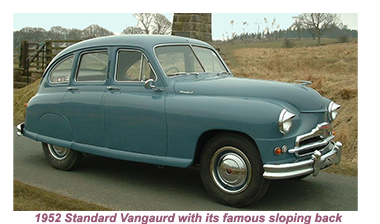
The Vanguard Series I which stood out because of its sweeping “beetle” style rear end was phased out in 1953 replaced by the more conservative Series II, whose rear end was not as unusual, although it did become known as the “notchback”.
As imposing as it was powerful, the Standard Vanguard was driven by a 2-litre overhead camshaft engine, matched to a three-speed gearbox synchronised and was operated by change gear-lever.
 The Vanguard, with its sweeping lines, proved to be a hit with the UK public throughout the Fifties, and succeeded in remaining in production, albeit undergoing a constant series of changes and updates until taken out of production in 1963.
The Vanguard, with its sweeping lines, proved to be a hit with the UK public throughout the Fifties, and succeeded in remaining in production, albeit undergoing a constant series of changes and updates until taken out of production in 1963.
The last of these updates came in 1955 when Standard released a completely revamped design Series III Vanguard, which in turn spawned some variants- the Sportsman, Ensign, Vanguard Vignale and eventually the Vanguard Six.


